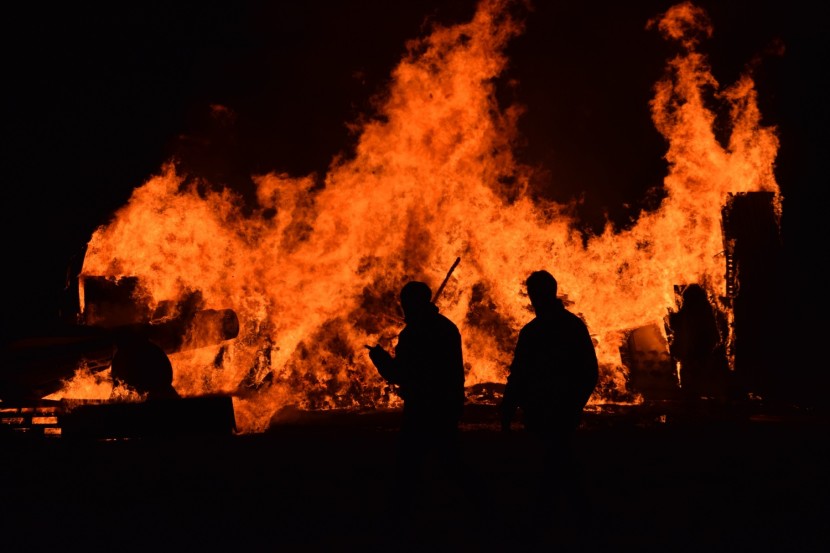
Bushfires have been devastating Australia's east coast on a scale not seen since the infamous Black Saturday, 10 years ago. During the country's worst-ever bushfire, more than 173 people died. In 2019, we witnessed a huge number of fires burn across New South Wales and Queensland, which resulted in a 'state of emergency' being declared and for the first time, the country's largest city, Sydney, received a 'catastrophic' fire warning. This has, sadly, continued right into 2020 with rain only just starting to provide some relief.
These fires aren't uncommon but they tend to occur at the height of summer from November to December due to high temperatures and a lack of rain. This time, however, the fires started earlier and and burned more intensely and for longer due to exceptionally high temperatures and very dry weather coupled with strong winds.
Impact on the east coast
In New South Wales alone, nearly five million hectares have been burned by thousands of fires, resulting in several deaths and hundreds of homes destroyed. Part of the area destroyed includes rainforest across Queensland and NSW, listed as a world heritage site.
A large number of koalas were also killed during the fires as their home burned to the ground around them. According to the chairman of the Australian Koala Foundation, Deborah Tabart, 80% of their habitat has gone in the fire. Experts are claiming that the animal, native to Australia, is now 'functionally extinct'.
A GoFundMe fundraiser has been set up for injured koalas. It has received more donations than any other campaign on the platform - topping $1 million in just a few weeks. This also makes it the second-largest in the country after it was launched three years ago.
Effect on the tourism economy
The initial impact has been devastating but this is likely to have long term effects for these two states, specifically on the tourism economy.
People across the world have been heartbroken and felt helpless as images and stories are shared on the news and across social media. While many have donated and helped to raise awareness, they are, naturally, avoiding visiting.
Speaking at the end of last year, New South Wales Premier Gladys Berejiklian said: "The impact on communities has been evident over the last few weeks. However, the extent of the impact to our farming and business sectors has not been fully quantified as these bushfires continue to burn." She also announced that $48 million will be put towards recovering from the fires.
Predictions based on a previous bushfire
While only time will tell the true impact of these fires on the tourism economy, we can look at previous disasters to get an idea.
In 2013, the Blue Mountain bushfires resulted in a loss of $30 million. Four weeks later, Chairman of Blue Mountains, Lithgow and Oberon Tourism, Randall Walker, told ABC: "We do know that current occupancy rates have been as much as 80 per cent down ... Some small bed and breakfast operators have had zero customers and zero revenue, larger operators are slowly recovering." He continued: "Some people believe that the attractions are gone. Of course none of them are. The natural attractions are there, the built attractions are there, the accommodation houses are there, and we're just sitting here waiting for people to turn up basically."
Also speaking to ABC, Mayor Mark Greenhill said: "Tourism is a life blood of our community. If people care about and love the Blue Mountains and if people care about and love this community and if people want to help this community in their time of need, the best thing they can do for us is come here. All of our beautiful tourist attractions are open for business. If people don't come here, it's a double whack for us. We've suffered the fires and then we've suffered a kick to our economy, our life blood."
It was argued that a new campaign was required to bring tourists back to the area. As a tourist, there are safeguards in place to ensure visitors are protected and cared for during their visit. So for tourists still looking at flight comparison websites and viewing hotels, there's never been a more prevalent time to entice them to visit - it's just the initial hurdle that tourism boards need to help them to overcome.
Is climate change to blame?
This year has seen unprecedented bushfires and the hottest average maximum temperature ever recorded across the whole country.
According to scientists, climate change is the reason for this. The weather has been more extreme with much higher temperatures much earlier in the year than usual. This year, fires have burnt in areas that have previously been too wet to burn.
Speaking to the BBC, an ecologist from the University of Sydney, Prof Glenda Wardle, said: "It's not every weather event that is the direct result of climate change. But when you see trends... it becomes undeniably linked to global climate change."
Australian National University climate scientist Dr Imran Ahmed, also speaking to the BBC, agreed: "What climate change does is exacerbate the conditions in which the bushfires happen." Dr Richard Thornton, chief executive of the Bushfires & Natural Hazards Co-operative Research Centre, continued: "We will start to see the extreme end of the fire behaviour scale occur more frequently because of the increase of temperatures. Everything we normally see as variability between a good fire season and a bad season is sitting on top of that extra 1°C - and that means that the severe events will occur more frequently."
Only time will tell whether these bushfires are going to become more frequent and extreme. The initial impact is devastating - but so too is the potential mid and long term effect on tourism. Australia faces a fight to retain its status on bucket lists of travellers the world over just at the time it needs the support most.
© 2026 HNGN, All rights reserved. Do not reproduce without permission.








